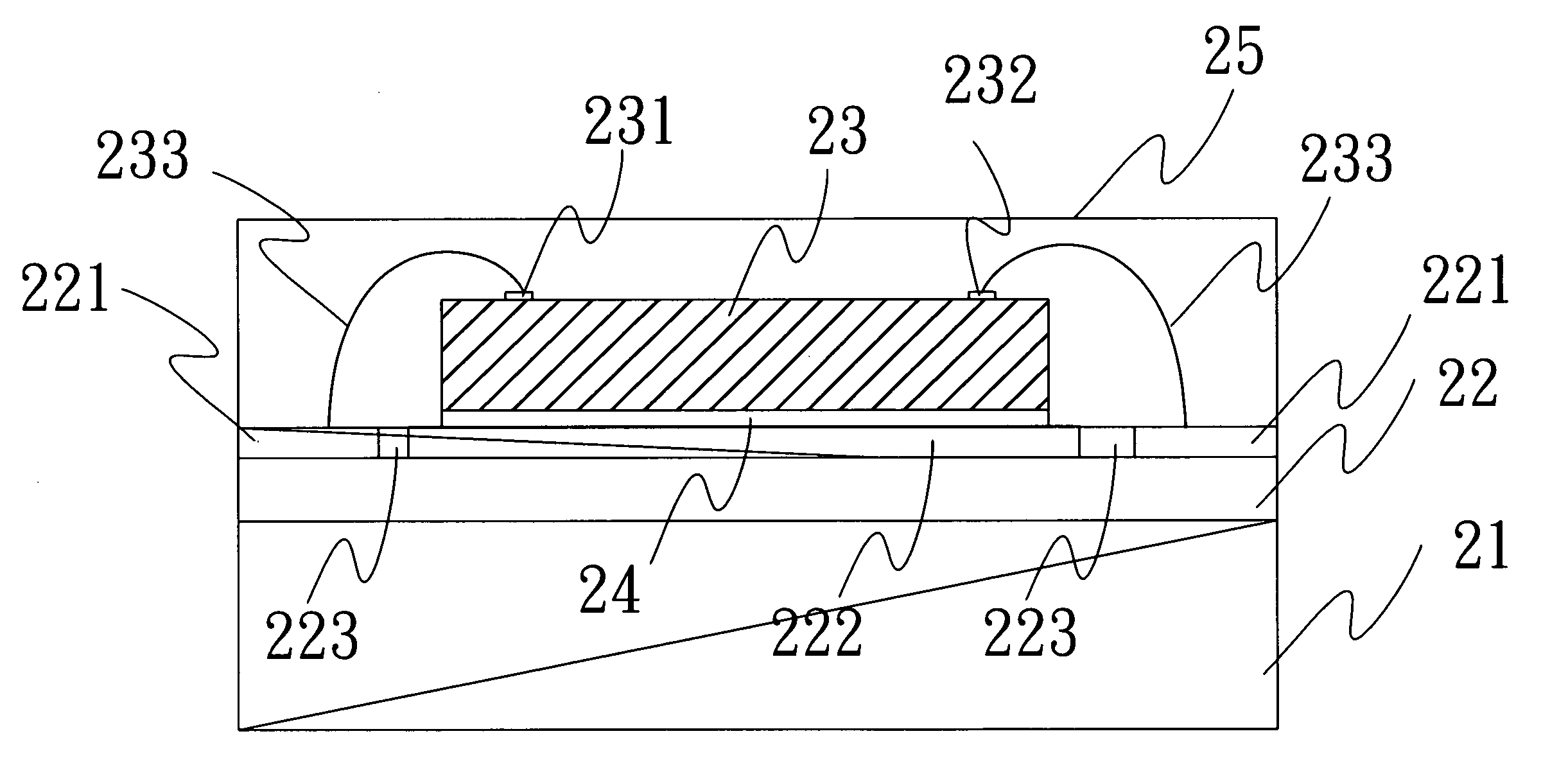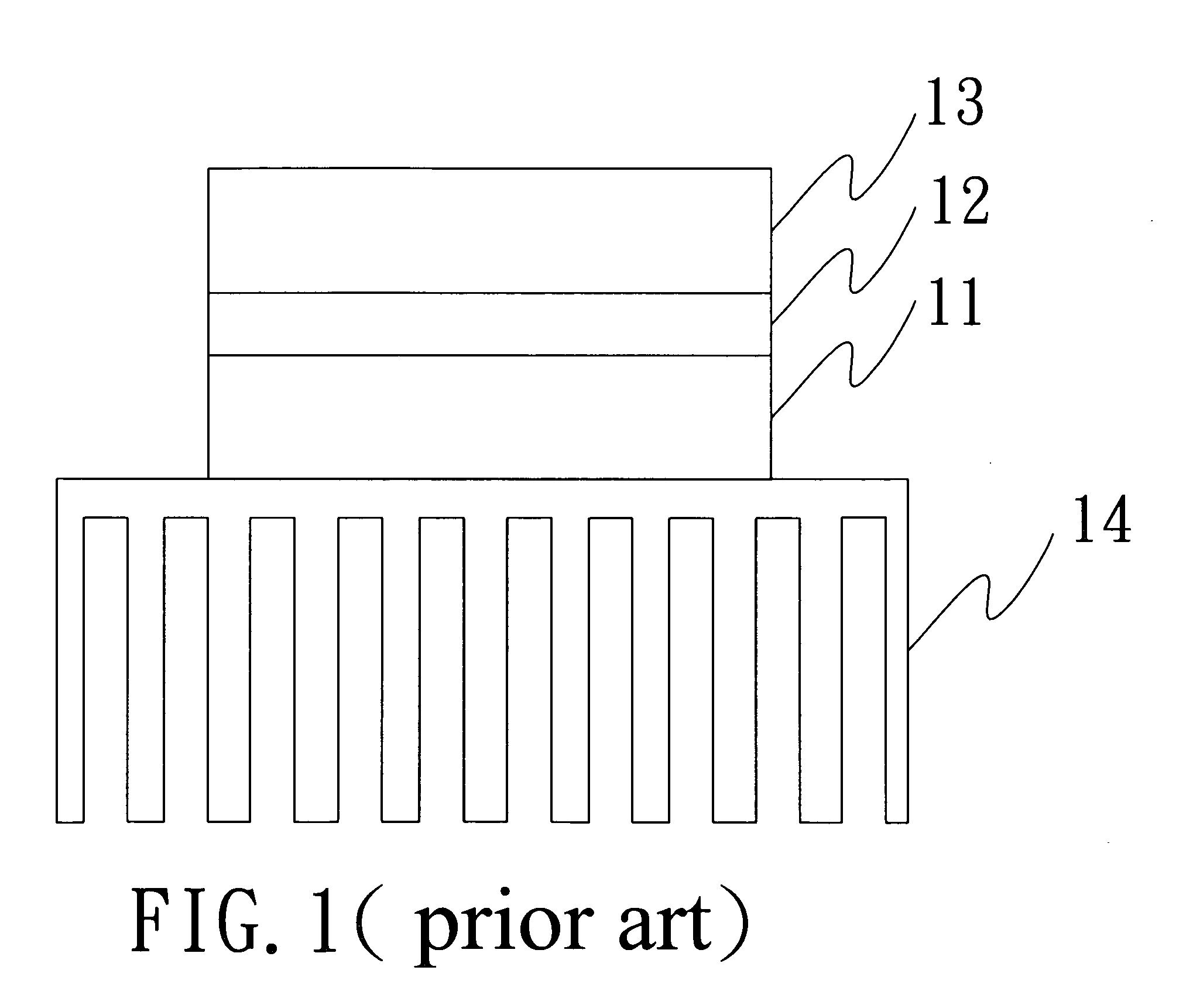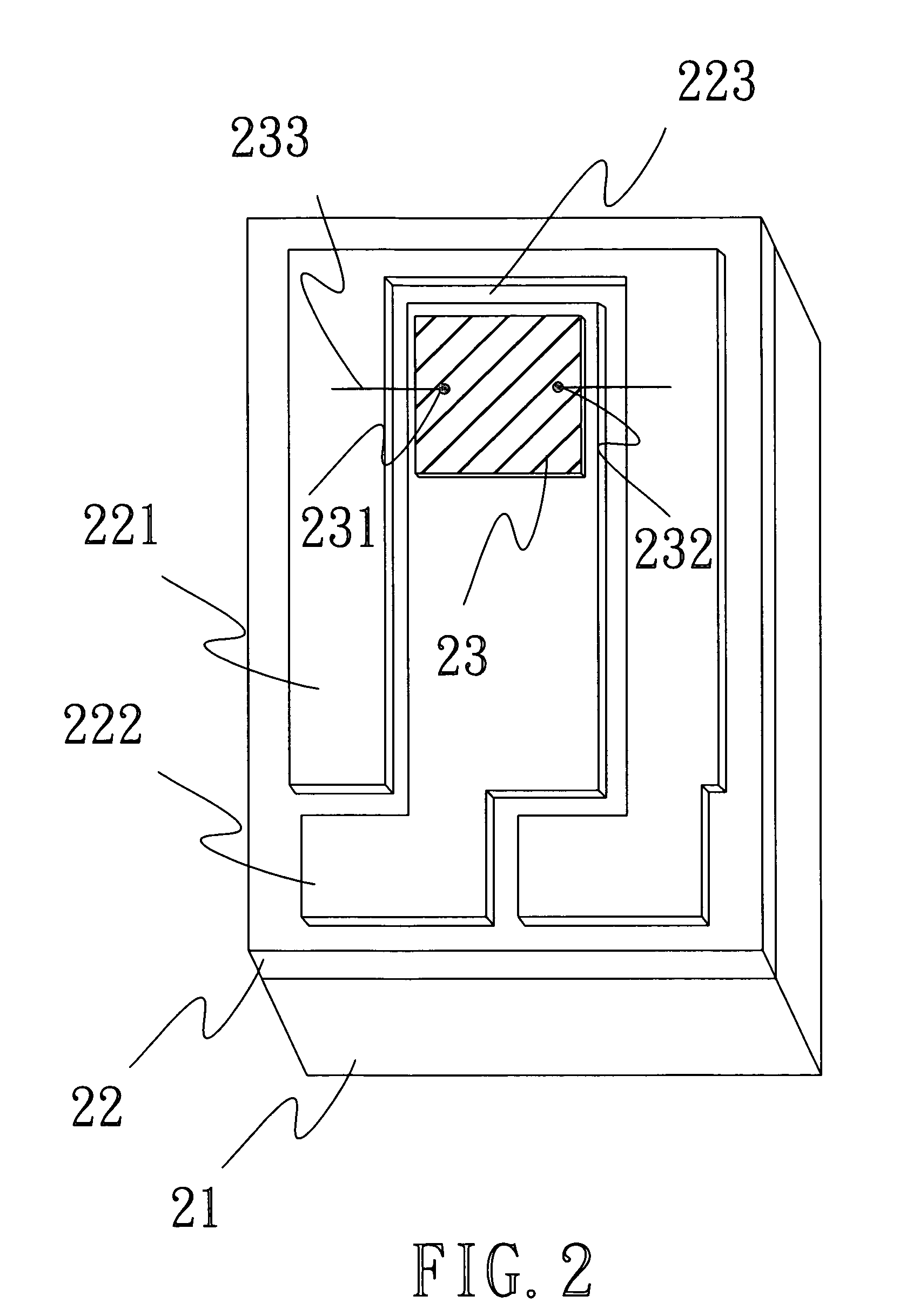Solar cell device structure
- Summary
- Abstract
- Description
- Claims
- Application Information
AI Technical Summary
Benefits of technology
Problems solved by technology
Method used
Image
Examples
Embodiment Construction
[0018]The purpose, construction, features, functions, and advantages of the present invention can be appreciated and understood more thoroughly through the following detailed description with reference to the attached drawings.
[0019]In the following, please refer to the related drawings together with detailed descriptions in describing a solar cell device structure according to an embodiment of the present invention. For easy reference and understanding, similar reference numerals are utilized to refer to similar elements.
[0020]In the following descriptions, please refer to FIGS. 2 & 3 simultaneously. Wherein, FIG. 2 is a perspective view of solar cell device structure according to an embodiment of the present invention; and FIG. 3 is a cross section view of a solar cell device structure according to an embodiment of the present invention. As shown in FIGS. 2 & 3, the solar cell device structure of the present invention is applicable to a concentrator solar cell device structure. Wh...
PUM
 Login to View More
Login to View More Abstract
Description
Claims
Application Information
 Login to View More
Login to View More - R&D
- Intellectual Property
- Life Sciences
- Materials
- Tech Scout
- Unparalleled Data Quality
- Higher Quality Content
- 60% Fewer Hallucinations
Browse by: Latest US Patents, China's latest patents, Technical Efficacy Thesaurus, Application Domain, Technology Topic, Popular Technical Reports.
© 2025 PatSnap. All rights reserved.Legal|Privacy policy|Modern Slavery Act Transparency Statement|Sitemap|About US| Contact US: help@patsnap.com



